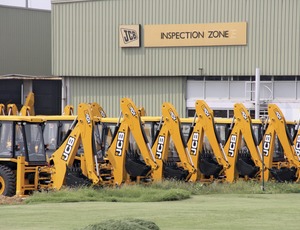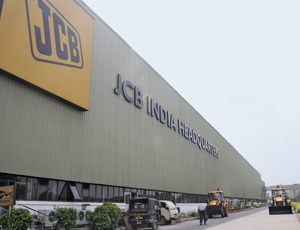

In India, backhoe-loaders are essential tools. Nearly every construction site on the subcontinent sports these nimble, versatile machines. With a bucket in front and a digger at the rear, backhoe-loaders allow workers to excavate material and haul it away in a few quick steps. They also can use the machines to lift pipe and handle other materials using dozens of attachments. And in India, there is only one brand to own: JCB.
JCB India, a subsidiary of the U.K.-based parent company known for pioneering the backhoe-loader concept in 1956, started operations here in 1979. At the time, most construction was performed solely with manual labor. Today, JCB enjoys a 70% market share in the backhoe-loader segment, and its success has made the company a household word.
"Most construction machines in India are just called JCBs," says Vipin Sondhi, JCB India managing director and chief executive officer. "Very often, it's just said, 'Bring me a JCB.' " Despite economic sluggishness in the rest of the world, the company reached its highest sales last year, at 27,000 units, a 30% hike over the prior year, driven largely by infrastructure investments across the country. Its 57-acre headquarters and main plant in Ballabgarh, about an hour outside of New Delhi, claims to be the largest backhoe-loader factory in the world.
It wasn't always this way. JCB struggled for years to sell Indian contractors on the idea of using machinery to do the work that laborers satisfied for hundreds of years. However, as the construction industry evolved, so did JCB's sales pitch.
"We actually went with mathematical calculations and sat down with prospective buyers," Sondhi explains. JCB gradually won the business, he adds, by convincing contractors that they could be more productive and earn more profit by mechanizing digging work. What started as a few units a year became a few dozen, then a few hundred, then a few thousand, units a year. "It was pain-staking, ground-level work," Sondhi says.
Mechanical Means
JCB's steady rise to become the largest construction equipment manufacturer in India has tracked consistently with the country's own increasing push to mechanize construction work. As a general-purpose construction machine, the backhoe-loader's versatility has allowed contractors to work at a more rapid pace.
More and more, "projects have to be done within a certain time frame," Sondhi says, "and with that has to come mechanization."
The social implications of mechanizing a country with such a large population is a concern for many Indians. In the mining sector, more than 40% of the work occurring today is ripe for mechanical automation, according to Debasish Chakravarthy, an associate professor at the Indian Institute of Technology in Kharagpur. He says automation benefits society as long as people are able to keep working.
"The [displaced jobs] should be replaced with some other jobs," Chakravarthy says. At JCB, Sondhi sees mechanization as an opportunity to "up-skill" the Indian workforce and improve their quality of life.
Adding a backhoe-loader to a construction project suddenly changes the skill-set demands, Sondhi notes. A contractor would need up to three operators—one per shift—to run the machine, as well as three helpers" to act as apprentices and maintain the unit. In addition, the dealer requires sales, service and parts professionals to support the contractor.

Post a comment to this article
Report Abusive Comment